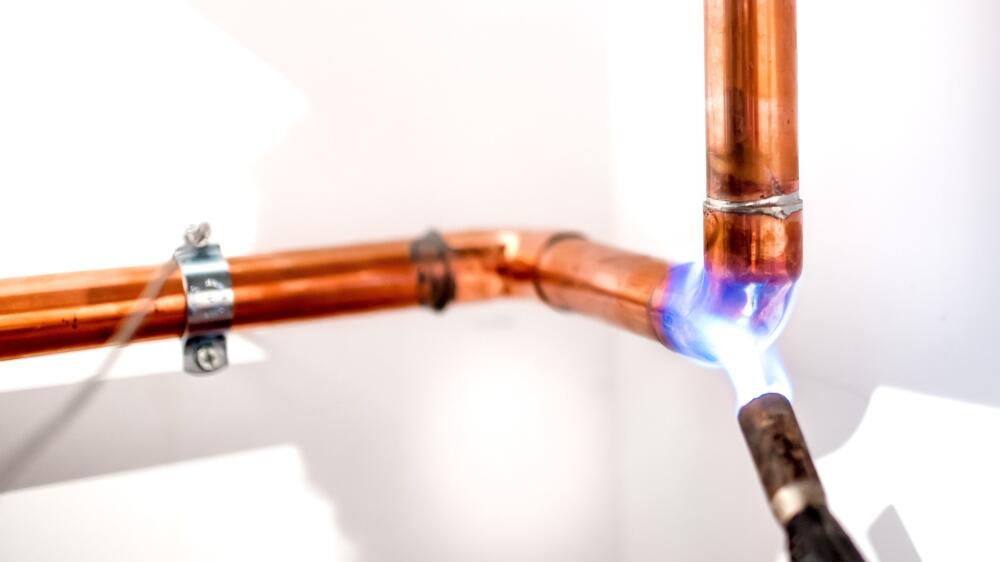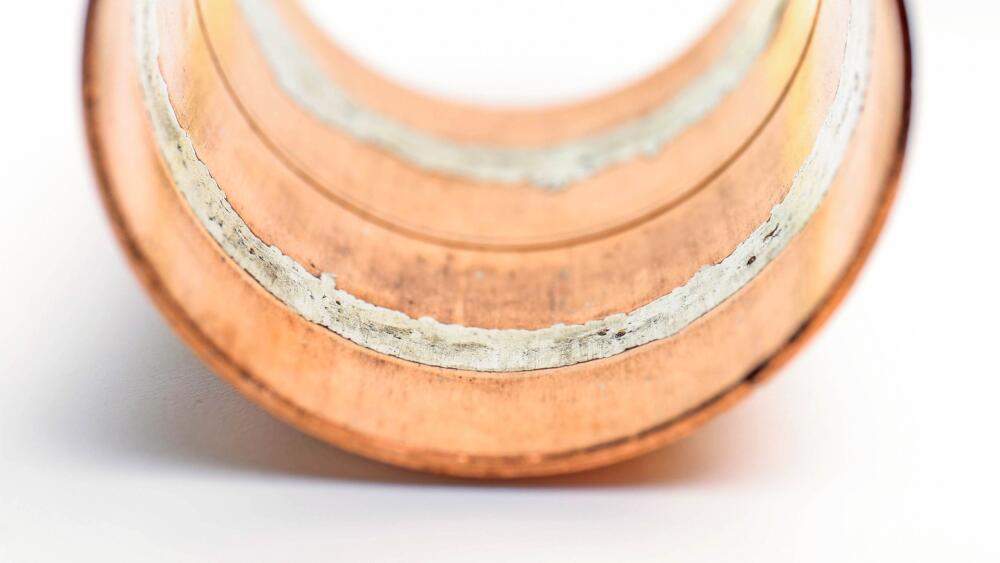How to Install Capillary Fittings: A Complete Step-by-Step Guide
End Feed and Solder Ring fittings are the most traditional of all the plumbing connections. Read here to learn how to use them.
Ultimo aggiornamento: Aug 30, 2024
Capillary fittings, including End Feed and Solder Ring fittings, are some of the most traditional plumbing connections used today. Whether you’re a professional installer or a DIY enthusiast, understanding how to properly install these fittings is crucial for creating secure and durable connections. This guide will take you through the process of installing both End Feed and Solder Ring fittings, with tips on preparation, equipment needed, and step-by-step instructions.
Soldati
I raccordi capillari Flowflex offrono una soluzione affidabile e professionale per realizzare connessioni forti e prive di perdite nei tubi. Disponibili sia nella variante End Feed che in quella con anello di saldatura, questi raccordi offrono flessibilità per diverse preferenze di installazione. Realizzati in rame di alta qualità e progettati secondo gli standard BS EN 1254, i nostri raccordi capillari garantiscono durabilità, resistenza alla corrosione e compatibilità con i sistemi di tubi in rame. Ideali per applicazioni domestiche e commerciali, offrono efficienza e affidabilità in ogni installazione.
Preparing your Copper Pipe
Proper preparation of your copper pipe is essential to achieve a strong, leak-free connection. Start by ensuring the pipe is cut flat and perpendicular to its length. Deburring the ends and removing any debris is also critical for the integrity of the joint.
Attrezzature
Strumenti
- Tagliatubi
- Utensile per Sbavare
- Protezione per le Mani
Rifornimenti
- Tubo in Rame
Fasi di Installazione
Taglia il Tuo Tubo alla Lunghezza Desiderata
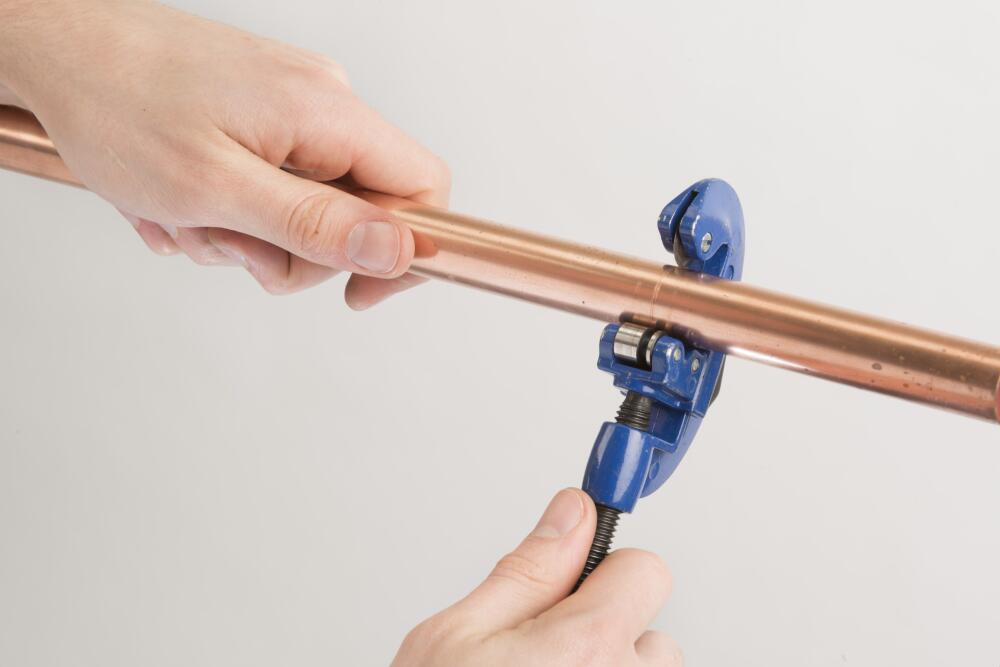
Taglia il tubo in modo netto lungo il diametro utilizzando un tagliatubi di qualità o un tagliatubi rotativo.
Taglia il Tuo Tubo con Precisione
È importante assicurarsi che le estremità del tubo siano pulite e tagliate ad angolo retto. Non farlo potrebbe influire sulla qualità della giunzione. Se il taglio non è piatto o il tubo è troppo corto, potrebbe non raggiungere lo stop del tubo compromettendo l'integrità della giunzione. Se è troppo lungo, potresti introdurre tensioni nell'intero sistema.
Pulisci la Presa del Tubo
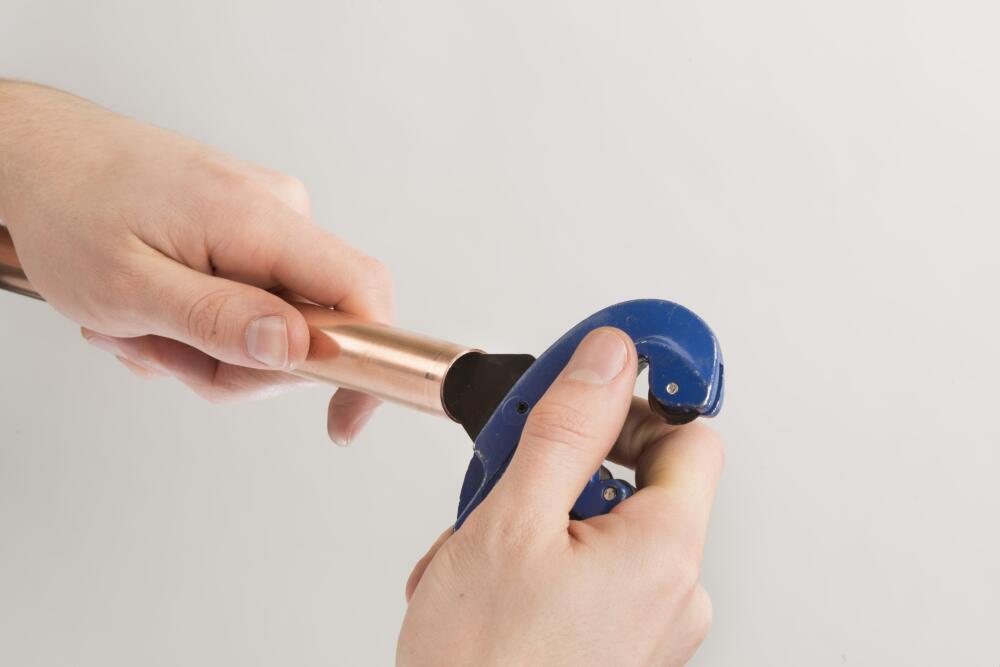
Utilizzando il tuo utensile per sbavare, assicurati che l'interno del tubo sia liscio e non interferisca con il flusso.
Pulisci l'Esterno del Tubo
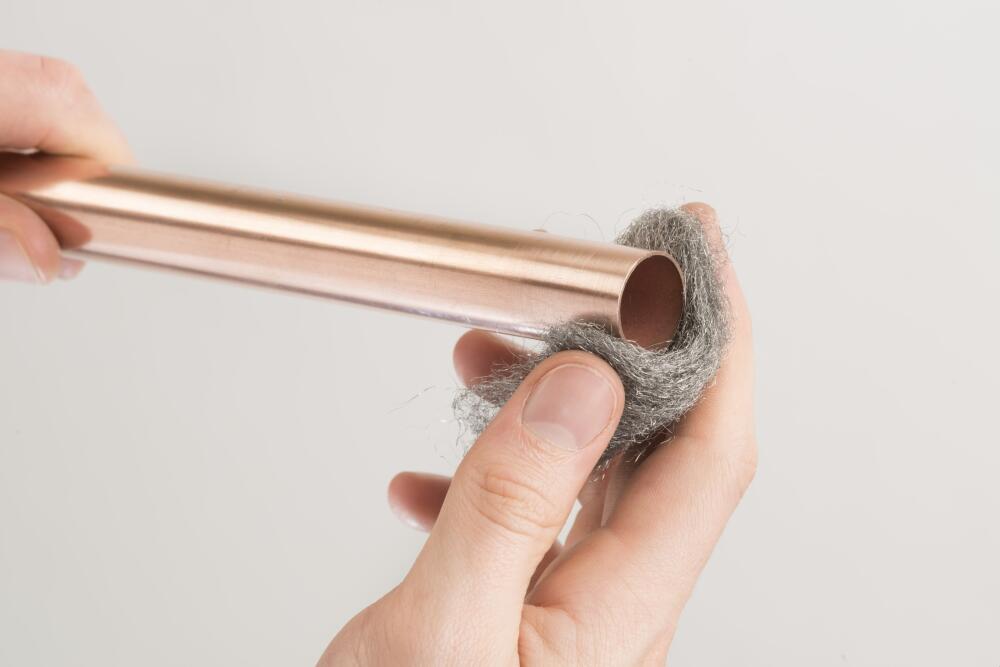
Pulisci l'esterno del tubo, assicurandoti che non ci siano residui di tubo, sporco o granelli vicino alla giunzione. Non rimuovere tutti gli ossidi o qualsiasi materiale nelle zone di sovrapposizione di raccordi e tubo può interferire con l'azione capillare, riducendo la forza della giunzione saldata, portando a un guasto.
Allo stesso modo, una pulizia eccessiva può rimuovere troppo materiale, provocando una vestibilità allentata e un guasto.
Installing End Feed Fittings
End Feed fittings require manual application of solder, making them slightly more complex than Solder Ring fittings, which come with pre-installed solder. Follow these steps to ensure a proper installation:
Attrezzature
Strumenti
- Flame
- Hand & Eye Protection
Rifornimenti
- Copper Pipe
- End Feed Fittings
- Solder (EN ISO 9453) or Brazing Rod (EN ISO 17672)
- Flux
Fasi di Installazione
Apply Flux
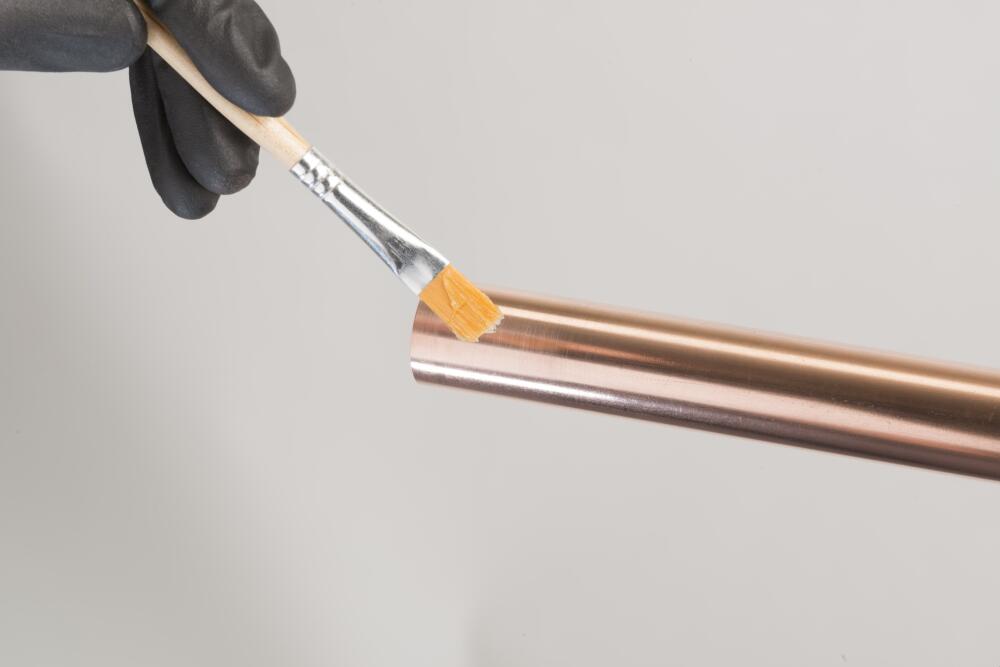
As soon as possible after cleaning, flux should be applied sparingly to the inside of the fitting and also the outside of the pipe at the point of overlap. This will help the capillary action and induce a stronger joint.
Assemble
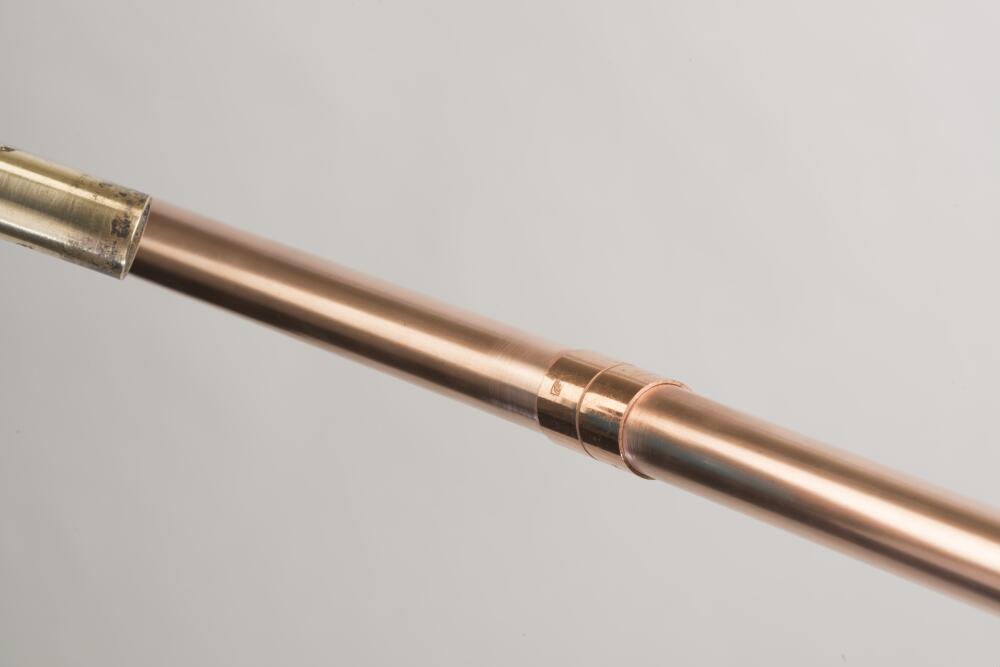
Insert the tube into the fitting until the pipe reaches the base of the pipe stop. A small twist can also be applied to ensure even coverage of the flux. At this point, excess flux should be wiped away using a rag.
Before proceeding to the next step, a uniform space around the circumference of the joint should be sought to allow for good capillary action. Excessive space can lead to cracking of the solder.
Heating

When heating, the entire circumference of the fitting should be heated evenly. It is recommended that you preheat the pipe and the fitting before applying direct heat.
Do Not Overheat the Joint
Do not overheat the joint or direct the flame into the face of the fitting cup. Overheating could burn the flux, which will compromise its effectiveness and the solder will not enter the joint properly.
Apply Solder

Touch the joint with the solder. If the solder does not melt, take it away and continue heating. If the solder begins to melt, push the solder into the joint whilst continuing to heat the base of the joint.
Solder joints depend on capillary action to draw the free-flowing solder into the narrow clearance between the tube and the fitting. Molten solder metal is drawn into the joint due to the capillary action, regardless of whether the flow is upwards, downwards or horizontal.
Cooling And Cleaning
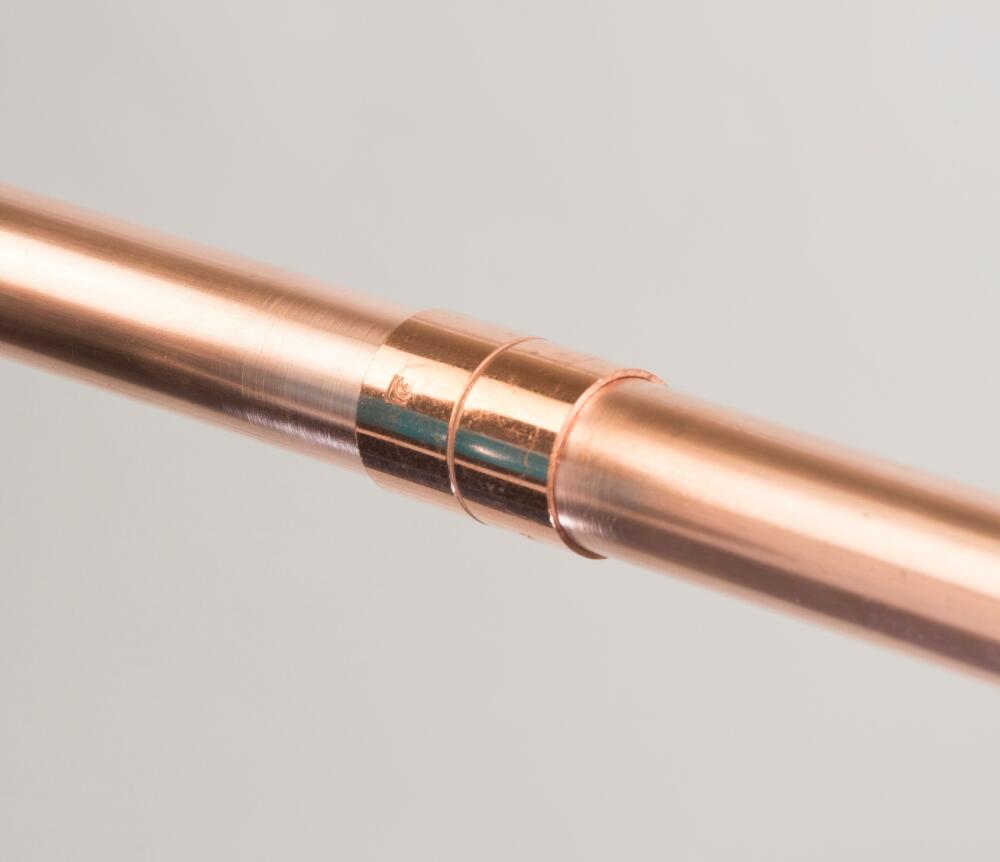
You should allow the joint to cool naturally. Cooling the joint forcefully could stress the joint.
When cool, remove any excess flux and residue with a wet rag.
Larger fittings require brazing instead of soldering. Brazing requires the same steps as above, but Brazing Rod must be used instead of Solder. Typically the Fitting will need to be heating to a much higher temperature also.
Installing Solder Ring Fittings
Solder Ring fittings simplify the process by having pre-installed solder, making installation quicker and more straightforward. Here’s how to install them:
Attrezzature
Strumenti
- Flame
- Hand & Eye Protection
Rifornimenti
- Flux
- Flowflex Solder Ring Fittings
- Copper Pipe
Fasi di Installazione
Apply Flux

As soon as possible after cleaning, flux should be applied sparingly to the inside of the fitting and also the outside of the pipe at the point of overlap. This will help the capillary action and induce a stronger joint.
Assemble

Insert the tube into the fitting until the pipe reaches the base of the pipe stop. A small twist can also be applied to ensure even coverage of the flux. At this point, excess flux should be wiped away using a rag.
Before proceeding to the next step, a uniform space around the circumference of the joint should be sought to allow for good capillary action. Excessive space can lead to cracking of the solder.
Heating
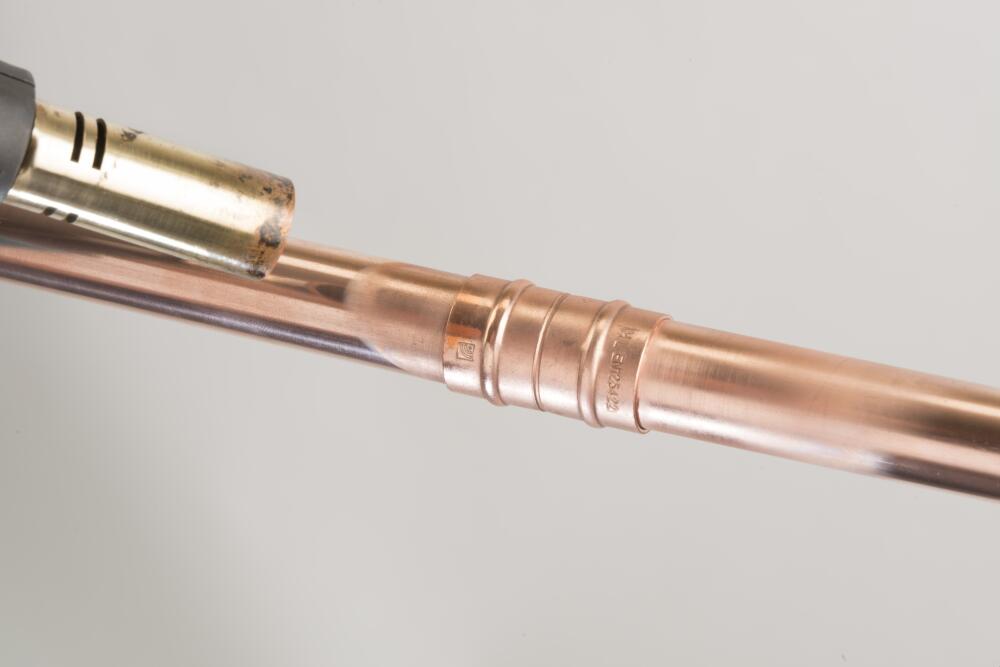
When heating, the entire circumference of the fitting should be heated evenly. It is recommended that you preheat the pipe and the fitting before applying direct heat.
Do Not Overheat the Joint
Do not overheat the joint or direct the flame into the face of the fitting cup. Overheating could burn the flux, which will compromise its effectiveness and the solder will not enter the joint properly.
Cooling And Cleaning

You should allow the joint to cool naturally. Cooling the joint forcefully could stress the joint.
When cool, remove any excess flux and residue with a wet rag.
Conclusion
Installing capillary fittings, whether End Feed or Solder Ring, requires attention to detail, the right tools, and proper techniques to ensure a strong and reliable joint. By following the outlined steps, you can achieve professional-quality installations every time. For more high-quality products, explore our End Feed and Solder Ring fitting ranges, designed to meet all your plumbing needs with ease and precision.
Qualche Domande?
Il nostro team è pronto per te sempre.
